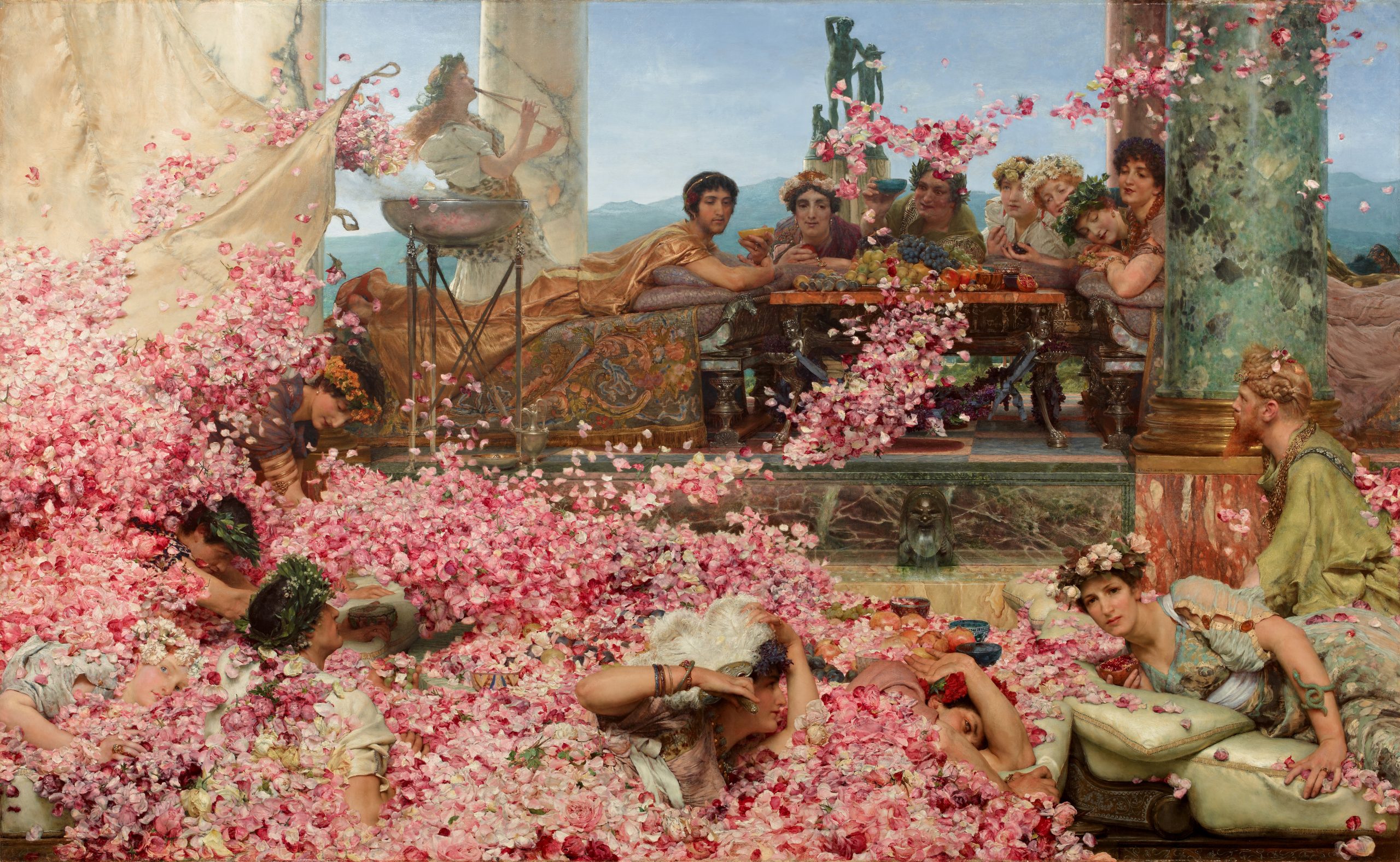The Roses of Heliogabalus by Lawrence Alma-Tadema
Beautiful Roman ladies relaxing in marble decors, carelessly leaning against an azure blue background or looking out over a calm sea. The interiors of Roman churches, archaeological excavations in Pompeii and everyday, lifelike scenes from classical antiquity take you on a journey to the past.
The nineteenth-century Dutch painter Lawrence Alma-Tadema was born in 1836 in the province of Friesland in the north of the Netherlands. In 1852 the young Alma-Tadema went to Antwerp to study at the Royal Academy of Fine Arts there. The Antwerp Academy had a good reputation internationally and attracted a lot of foreign artists, many from the Netherlands. Tadema continued his studies in the studio of Louis De Taeye, who taught courses in history and historical costume at the Antwerp Academy. De Taeye introduced him to history books about the Merovingian period – which would become a lifelong fascination of the artist – and encouraged him to pursue historical accuracy in his paintings.
In 1863 Tadema visited Naples and Pompeii, where he witnessed the excavations in Pompeii. This developed his interest in depicting the life of ancient Greece and Rome, especially the latter since he found new inspiration in the ruins of Pompeii, which fascinated him and would inspire much of his work in the coming decades. He also collected antique objects himself and in this way reconstructed the past in his studio – and on his canvases. With his brush he was one of the firsts academic painter to really bring a lost world to life.
 Lawrence Alma-Tadema, The Roses of Heliogabalus, 1888. Oil on canvas, 132.1 x 213.9 cm. Collection Juan Antonio Pérez Simón, Mexico.
Lawrence Alma-Tadema, The Roses of Heliogabalus, 1888. Oil on canvas, 132.1 x 213.9 cm. Collection Juan Antonio Pérez Simón, Mexico.



